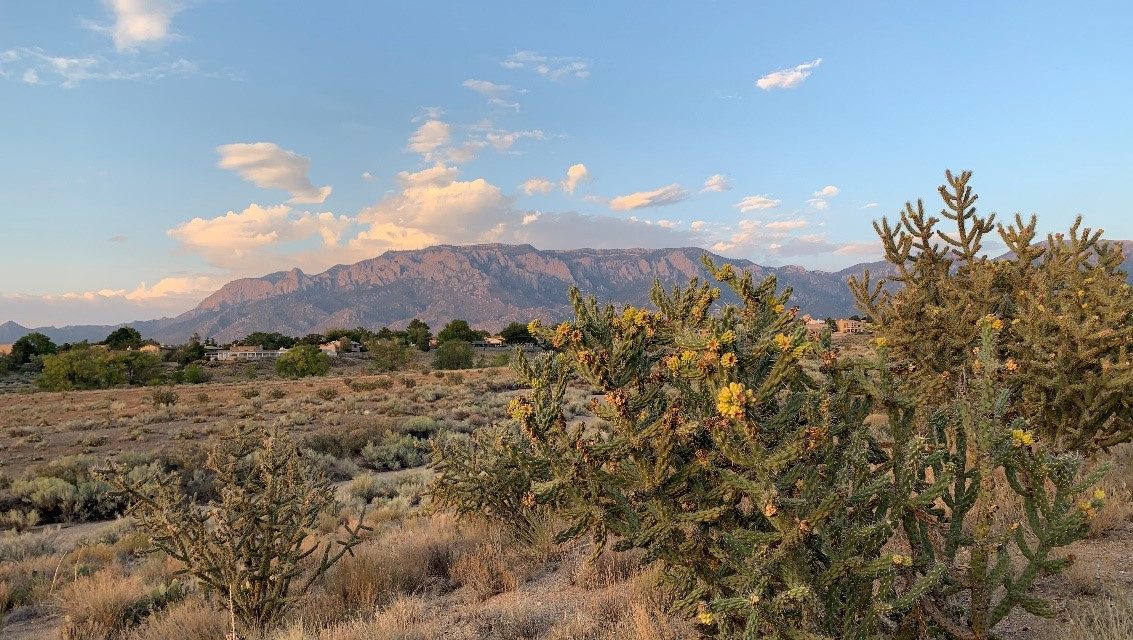From the desk of Maya van Rossum
I have had an amazing few weeks in New Mexico (with 2 more to go) filming Part III of Here’s The Story: the Green Amendment.
When the producer of our Green Amendment documentary series – Steve Rogers – heard about the amazing energy we were experiencing in New Mexico for a NM Green Amendment he was all in for focusing Part 3 of the series on New Mexico.
During my travels — from being dropped off at the Philadelphia airport by my husband Dave, until getting into my rental car — I wore a facemask and used plenty of alcohol spray for disinfection and regular handwashing. I arrived in New Mexico on September 15. I quarantined for 4 days, secured a COVID test and, despite the test being negative, I continued to quarantine for 6 more days, just to be sure. And then the interviews started.
Over the week-plus I have met with an amazing group of leaders and advocates giving me a beautiful perspective on this amazing state and confirmation that a NM Green Amendment would be valued and is needed.
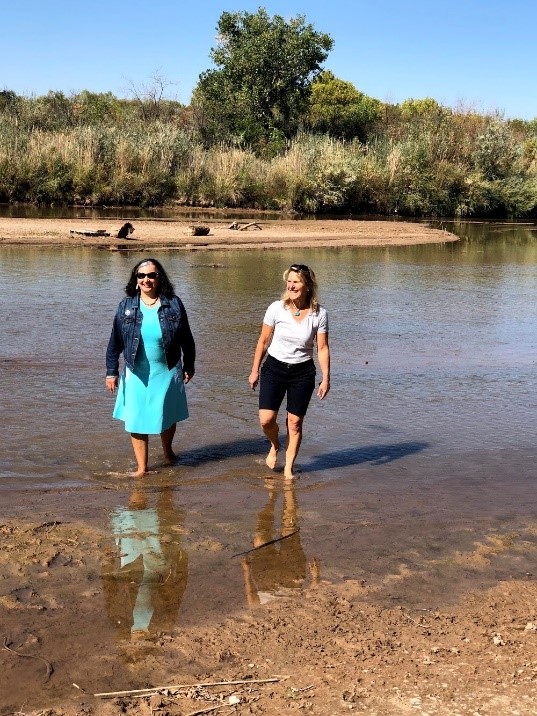 Senator Antoinette Sedillo Lopez shared her joy of growing up on the Rio Grande River, her passion for environmental protection, and why she sees a Green Amendment as being a critical tool for protecting the rights of all New Mexicans to pure water, clean air, a stable climate and healthy environments. Hearing Senator Sedillo Lopez share her journey — to elected office so she could more powerfully protect the people and environments of New Mexico, how she became the Senator to advance a moratorium on fracking until needed knowledge could be gathered on the effects of the industry, and her vision for a New Mexico economy that is based on industries that fulfill the needs of the state while protecting the environment and peoples’ health at the same time — made clear why she was the champion leading the call for a NM Green Amendment. After our formal interview the Senator showed me her River and talked passionately about its past, its present and her hopes for the River’s future – understanding that it is a key life force for supporting the state. We even took a spontaneous stroll into the river – its cool waters were amazing and refreshing on a hot September day.
Senator Antoinette Sedillo Lopez shared her joy of growing up on the Rio Grande River, her passion for environmental protection, and why she sees a Green Amendment as being a critical tool for protecting the rights of all New Mexicans to pure water, clean air, a stable climate and healthy environments. Hearing Senator Sedillo Lopez share her journey — to elected office so she could more powerfully protect the people and environments of New Mexico, how she became the Senator to advance a moratorium on fracking until needed knowledge could be gathered on the effects of the industry, and her vision for a New Mexico economy that is based on industries that fulfill the needs of the state while protecting the environment and peoples’ health at the same time — made clear why she was the champion leading the call for a NM Green Amendment. After our formal interview the Senator showed me her River and talked passionately about its past, its present and her hopes for the River’s future – understanding that it is a key life force for supporting the state. We even took a spontaneous stroll into the river – its cool waters were amazing and refreshing on a hot September day.
Sister Joan Brown from NM Interfaith Power and Light talked with me about the power of her faith for guiding her commitment to environmental protection and talked about her efforts, and those of her organization, to join people of faith together in fending off the ravages of climate change. She shared the ways that she and her organization worked with people of all faiths to develop and advance healthy and strong relationships that could be relied upon to advance common goals of both environmental and community protection. It was clear from the moment I walked up to Sister Joan’s house surrounded by native plants and home-grown vegetables that this was a woman who lived what she believed – – she didn’t just preach out environmental and community protection, she lived it. Young Mateo, just 7 years old, who has the joy of playing in Sister Joan’s amazing garden as a reprieve from being quarantined indoors, talked about why he treasures a healthy environment and shared his vision for creating a solar powered car that would negate the need for fossil fuels.
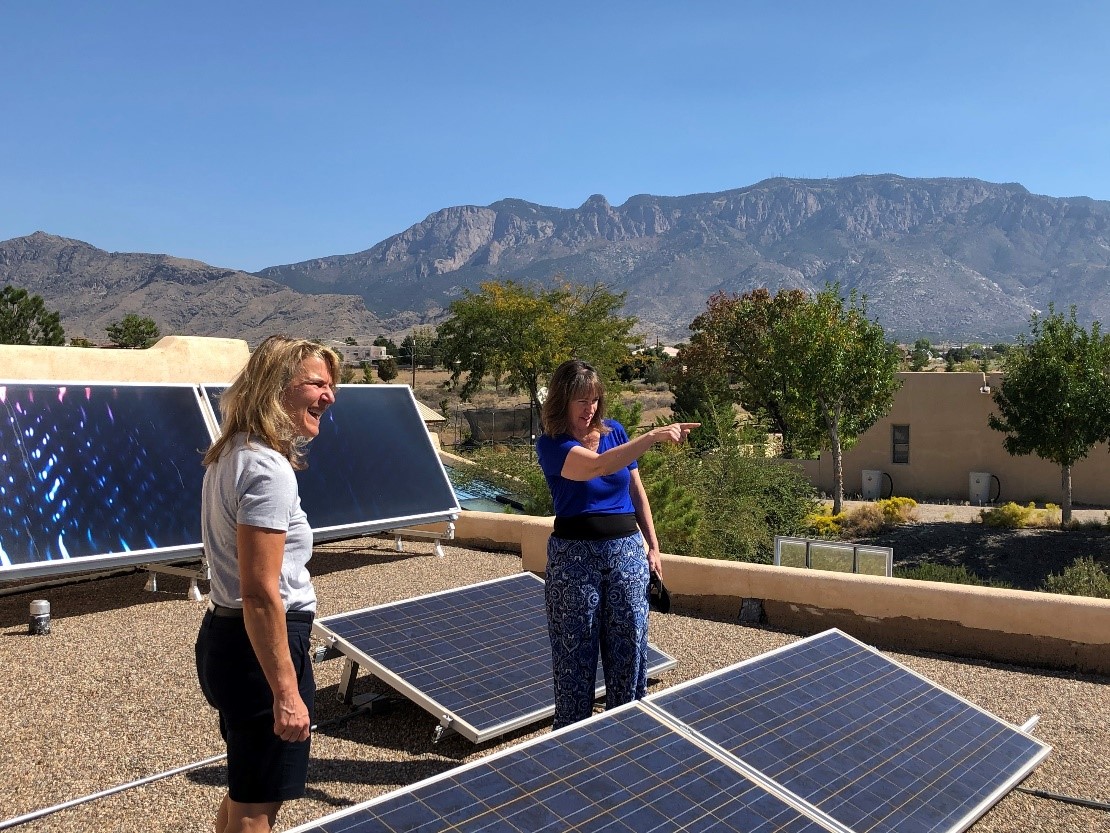 Athena Christodoulou expressed her commitment to advancing solar energy in the state, and shared her personal commitment to become carbon neutral in her own home. She showed us the different kinds of technology she and her husband had invested in to achieve that goal. When asked why she was so committed to environmental protection, Athena emotionally, and powerfully, talked about her dedication to protecting the earth for the benefit of her young granddaughter. As her tears of love flowed forth I thought of my own kids and how my commitment to the Green Amendment movement was fueled by my love for them and our beautiful earth.
Athena Christodoulou expressed her commitment to advancing solar energy in the state, and shared her personal commitment to become carbon neutral in her own home. She showed us the different kinds of technology she and her husband had invested in to achieve that goal. When asked why she was so committed to environmental protection, Athena emotionally, and powerfully, talked about her dedication to protecting the earth for the benefit of her young granddaughter. As her tears of love flowed forth I thought of my own kids and how my commitment to the Green Amendment movement was fueled by my love for them and our beautiful earth.
 After these inspiring and positive conversations of passion and commitment for environmental protection we journeyed to Carlsbad, NM. I have to be honest, the journey into and out of Carlsbad was deeply disturbing – it hurt my heart and soul to see the massive buildout of fossil fuel extraction wells, processing centers, compressor stations and more. It was acre after acre, as far as the eye could see, of this devastating industry. After seeing so much of the beauty of New Mexico and truly falling in love with this “Land of Enchantment” I was horrified to see how this part of the state, its natural resources, communities, people and families were being sacrificed to the fossil fuel industry.
After these inspiring and positive conversations of passion and commitment for environmental protection we journeyed to Carlsbad, NM. I have to be honest, the journey into and out of Carlsbad was deeply disturbing – it hurt my heart and soul to see the massive buildout of fossil fuel extraction wells, processing centers, compressor stations and more. It was acre after acre, as far as the eye could see, of this devastating industry. After seeing so much of the beauty of New Mexico and truly falling in love with this “Land of Enchantment” I was horrified to see how this part of the state, its natural resources, communities, people and families were being sacrificed to the fossil fuel industry.

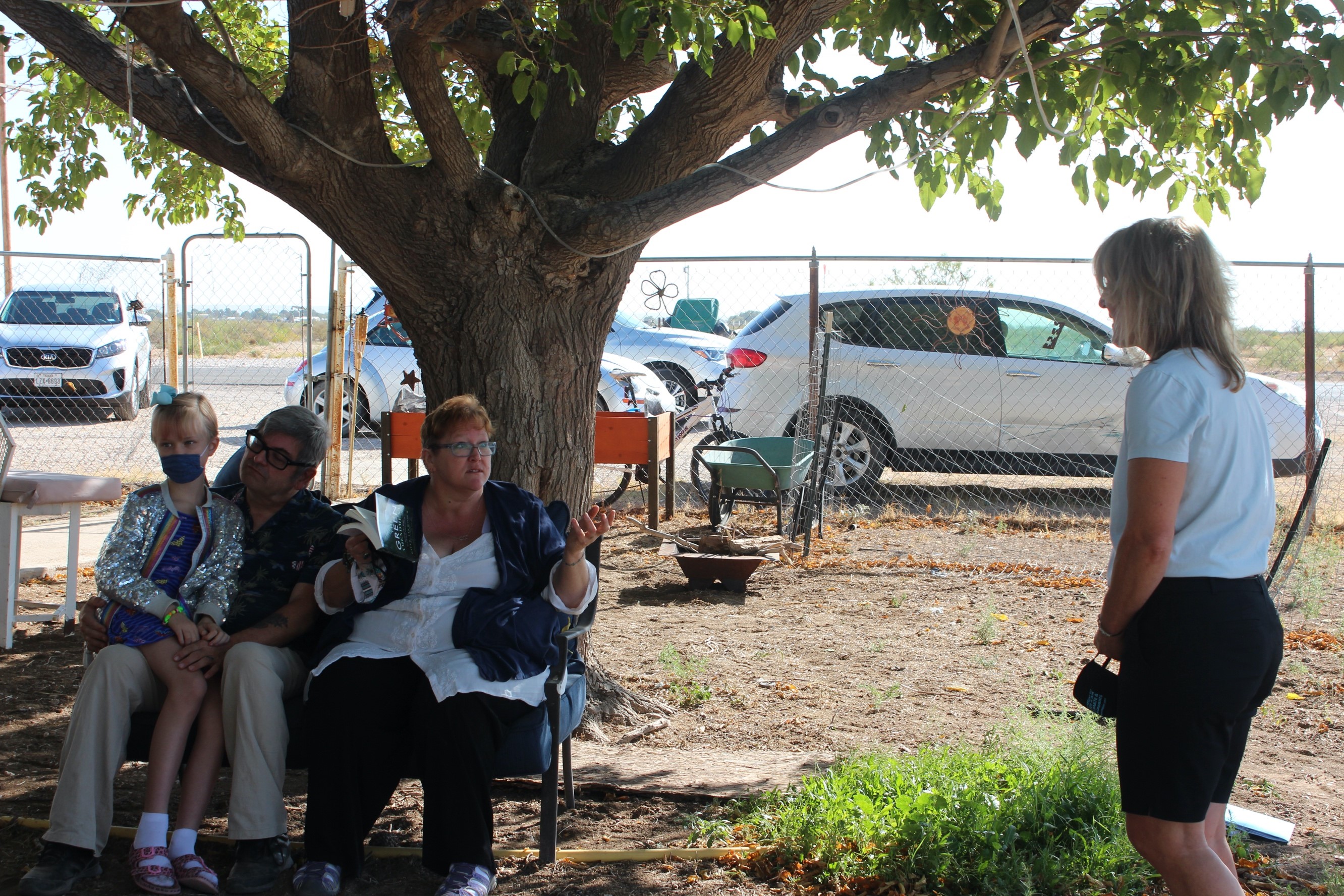 My first meet-up outside of Carlsbad was with Penny Aucoin, Dee George, and their beautiful young daughter Sky. They talked with me about how Dee had grown up on the property where they now lived – it wasn’t a massive or fancy homestead but it was natural, open, warm, loving and theirs. Penny and Dee both lit up as Dee recounted his exploits as a boy enjoying the beautiful nature of the area – running through the desert, enjoying the frogs and other critters, his exploits with his friends floating down a canal that flowed through town, and his joy at watching the 2 trees he planted as a young boy grow into beautiful havens for the birds that Penny and he enjoyed each evening during their obviously beautiful life together as a couple. But the birds no longer seemed to visit because of the fossil fuel catastrophe they were soon to recount for me. That was when the mood changed. Penny’s face turned a mixture of angry, dismayed and sad as she told the story of the night they were awakened as toxic and radioactive fracked wastewater (what the industry likes to call “produced water”) literally rained down on their home, themselves, and their animals. It was painful to hear them recount the night that they frantically ran out into the yard to investigate what was happening and to try to protect their animals, including the 18 chickens that they ultimately had to euthanize because of the toxic exposure — and how their Great Dane, Duke, drank the water that came off the house and fell so ill, falling down and losing his bowels, that they had to put him to sleep. Penny talked about how the raining water, which they didn’t learn was frack wastewater until later, burned their eyes and skin, and so solidly soaked their property that they no longer felt safe enjoying their yard; particularly because the industry was never required by the state to do any sort of meaningful cleanup of the soil and property. Sure, they spray washed their home, but all that did was add the toxic water that covered their home to the toxic water that soaked into their soil and land. My heart continued to ache as Penny & Dee took me around their community to see all of the fracking and fossil fuel infrastructure that now dominated the once natural landscape they so cherished just a few short years before.
My first meet-up outside of Carlsbad was with Penny Aucoin, Dee George, and their beautiful young daughter Sky. They talked with me about how Dee had grown up on the property where they now lived – it wasn’t a massive or fancy homestead but it was natural, open, warm, loving and theirs. Penny and Dee both lit up as Dee recounted his exploits as a boy enjoying the beautiful nature of the area – running through the desert, enjoying the frogs and other critters, his exploits with his friends floating down a canal that flowed through town, and his joy at watching the 2 trees he planted as a young boy grow into beautiful havens for the birds that Penny and he enjoyed each evening during their obviously beautiful life together as a couple. But the birds no longer seemed to visit because of the fossil fuel catastrophe they were soon to recount for me. That was when the mood changed. Penny’s face turned a mixture of angry, dismayed and sad as she told the story of the night they were awakened as toxic and radioactive fracked wastewater (what the industry likes to call “produced water”) literally rained down on their home, themselves, and their animals. It was painful to hear them recount the night that they frantically ran out into the yard to investigate what was happening and to try to protect their animals, including the 18 chickens that they ultimately had to euthanize because of the toxic exposure — and how their Great Dane, Duke, drank the water that came off the house and fell so ill, falling down and losing his bowels, that they had to put him to sleep. Penny talked about how the raining water, which they didn’t learn was frack wastewater until later, burned their eyes and skin, and so solidly soaked their property that they no longer felt safe enjoying their yard; particularly because the industry was never required by the state to do any sort of meaningful cleanup of the soil and property. Sure, they spray washed their home, but all that did was add the toxic water that covered their home to the toxic water that soaked into their soil and land. My heart continued to ache as Penny & Dee took me around their community to see all of the fracking and fossil fuel infrastructure that now dominated the once natural landscape they so cherished just a few short years before. 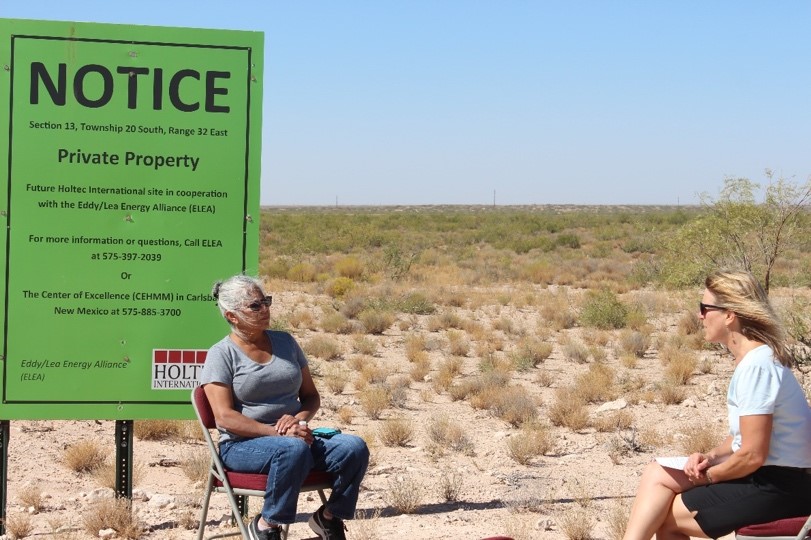 The sights, smells and sounds overwhelmed us throughout the tour – it didn’t take long for my eyes to start burning, to feel off kilter, dizzy and a little bit nauseous. Our time together ended with Penny and I watching as their daughter Sky, diagnosed as autistic, was quietly and determinedly building a nest in one of Dee’s trees, which have fallen sick since the incident, to both “feed the tree” and create a place for the birds when they decided it was safe to return. While it was difficult to hear Penny and Dee’s story, it was inspiring to see how they were using their experience to rise up in defense of their community and the environment – not letting the industry, the community naysayers, or the lack of government help dampen their spirits or their commitment to be true champions for their family, community and the earth.
The sights, smells and sounds overwhelmed us throughout the tour – it didn’t take long for my eyes to start burning, to feel off kilter, dizzy and a little bit nauseous. Our time together ended with Penny and I watching as their daughter Sky, diagnosed as autistic, was quietly and determinedly building a nest in one of Dee’s trees, which have fallen sick since the incident, to both “feed the tree” and create a place for the birds when they decided it was safe to return. While it was difficult to hear Penny and Dee’s story, it was inspiring to see how they were using their experience to rise up in defense of their community and the environment – not letting the industry, the community naysayers, or the lack of government help dampen their spirits or their commitment to be true champions for their family, community and the earth.
Our next visit was with Rose Gardner who was leading the battle to prevent the disposal of radioactive nuclear waste in her community – waste that would be brought from nuclear reactors all over the nation. Rose talked about the importance of the natural landscape, communities, and nearby ranch and businesses that would be harmed if the Holtec nuclear waste facility was allowed to advance. As Rose spoke with me about the threat I was struck by the calm yet powerful force for protection she displayed – she didn’t raise her voice in anger, but there was a power and force that emanated with every word and expression. It wasn’t just her obvious strength and stamina for the battle that so impressed me, but it was her knowledge of the threat her community faced and how she was putting that knowledge to work to defend against this looming threat.
 I met next with Kevin Bixby, Executive Director of the Southwest Environmental Center, who has an amazing and infectious connection with the natural world. Kevin talked about how New Mexico’s waterways and wildlife have been sacrificed to old ways of thinking that have no place in our modern world, where science and experience make clear the intimate and irreplaceable connection between people and the natural ecosystems and wildlife with whom we share our world. It was clear that while he was working hard to protect the people of New Mexico, he was dedicated to ensuring that government decisionmaking and action wasn’t just about the people– he wanted to be sure that wildlife and nature were equally respected and protected.
I met next with Kevin Bixby, Executive Director of the Southwest Environmental Center, who has an amazing and infectious connection with the natural world. Kevin talked about how New Mexico’s waterways and wildlife have been sacrificed to old ways of thinking that have no place in our modern world, where science and experience make clear the intimate and irreplaceable connection between people and the natural ecosystems and wildlife with whom we share our world. It was clear that while he was working hard to protect the people of New Mexico, he was dedicated to ensuring that government decisionmaking and action wasn’t just about the people– he wanted to be sure that wildlife and nature were equally respected and protected.
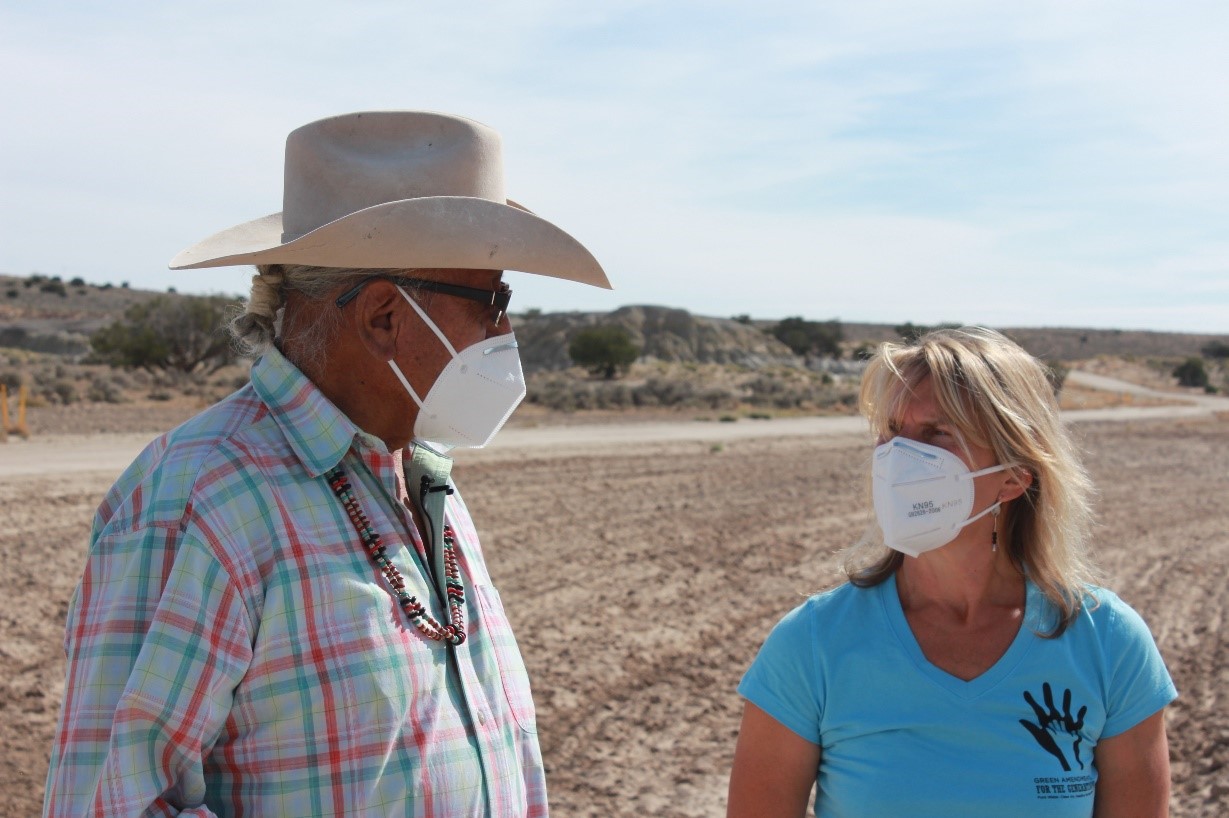 My travels then took me to the Chaco Canyon region where I was honored to spend the day with Daniel Tso, an elected delegate to the Navajo Nation Council, and Mario Atencio, a Legislative District Assistant at Navajo Nation Council and to Delegate Tso. I toured Navajo lands, state owned lands, and federally managed lands—the “checkerboard” lands–with Daniel and Mario. Each step out of our vehicle to look at another fracking fossil fuel operation brought an assault on the senses – the sounds, smells and sights were overwhelming. Daniel and Mario encouraged me to replace my usual face mask with an N95 mask to protect myself from the VOCs and other toxic emissions emanating from the industrial fracking sites we were visiting – sites that were imposing these same toxic emissions on nearby Navajo residents. They shared stories of how their Native American family and community members were taken advantage of by the fossil fuel industry and not protected by state and federal government agencies that should have been there to protect them. It was shocking to witness a massive water withdrawal facility that sucked up and delivered millions of gallons of water for fracking operations and to learn that it was surrounded by Native American communities who themselves had no easy access to water. In my later interviews with Daniel, Mario and Samuel Sage I was honored as they shared with me an introduction of themselves in their native Navajo language; and as they talked about the beauty of the relationship of the Navajo people with Mother Earth and Father Sky and how they were taught to take what they needed form the earth but no more, and at the same time were instructed to protect the earth for future generations.
My travels then took me to the Chaco Canyon region where I was honored to spend the day with Daniel Tso, an elected delegate to the Navajo Nation Council, and Mario Atencio, a Legislative District Assistant at Navajo Nation Council and to Delegate Tso. I toured Navajo lands, state owned lands, and federally managed lands—the “checkerboard” lands–with Daniel and Mario. Each step out of our vehicle to look at another fracking fossil fuel operation brought an assault on the senses – the sounds, smells and sights were overwhelming. Daniel and Mario encouraged me to replace my usual face mask with an N95 mask to protect myself from the VOCs and other toxic emissions emanating from the industrial fracking sites we were visiting – sites that were imposing these same toxic emissions on nearby Navajo residents. They shared stories of how their Native American family and community members were taken advantage of by the fossil fuel industry and not protected by state and federal government agencies that should have been there to protect them. It was shocking to witness a massive water withdrawal facility that sucked up and delivered millions of gallons of water for fracking operations and to learn that it was surrounded by Native American communities who themselves had no easy access to water. In my later interviews with Daniel, Mario and Samuel Sage I was honored as they shared with me an introduction of themselves in their native Navajo language; and as they talked about the beauty of the relationship of the Navajo people with Mother Earth and Father Sky and how they were taught to take what they needed form the earth but no more, and at the same time were instructed to protect the earth for future generations.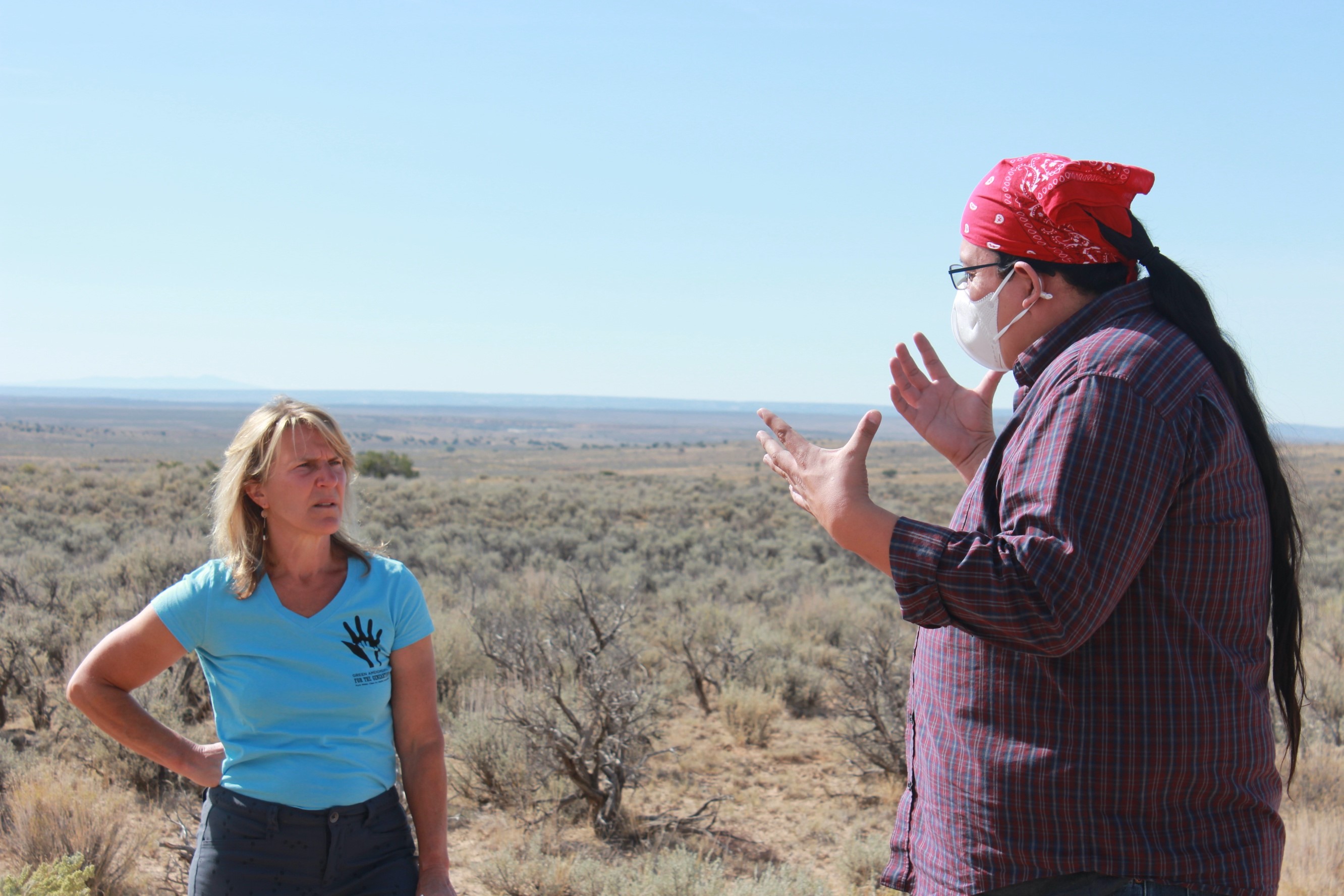
Throughout my journey I heard Joan, Penny, Dee, Daniel, Mario, Rose and Kevin talk about the heart wrenching reality of what it means to know that they, their communities, our natural ecosystems and wildlife are a part of environmental sacrifice zones that have been sacrificed by government in order to serve the goals and greed of industry and others.
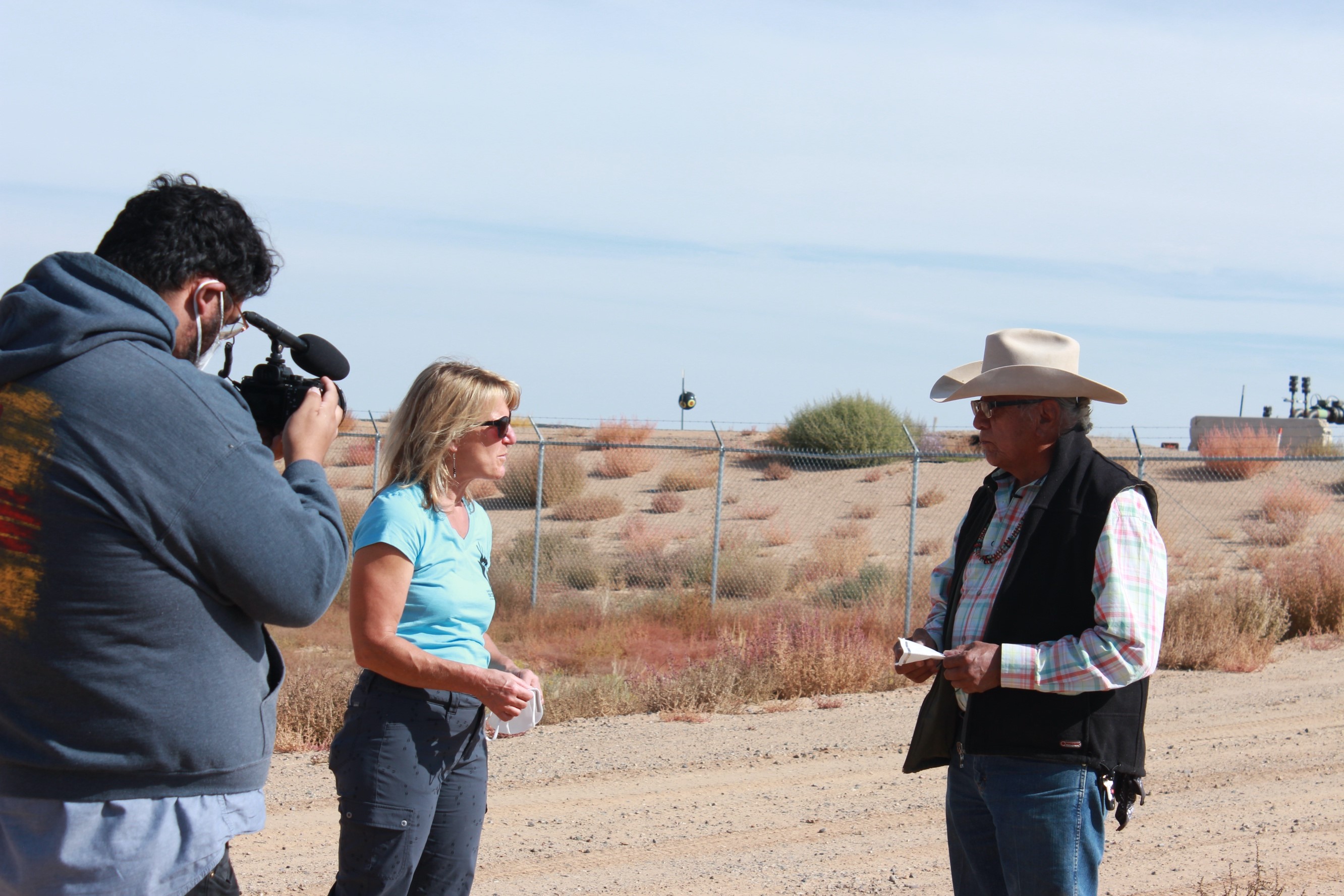 While not an interview or formal part of our film to come, I have been joined in this journey by an amazing young man – John Acosta with Working Classroom here in New Mexico. While planning this trip I of course knew I would need someone to help capture the video footage; I wanted to hire someone local and my inquiries led me to John. John’s dedication to his work and his pride in his community shines through every earnest expression that crosses his face while he sets up his cameras and considers the best shot. When we have moments of down time John proudly talks about his organization and the work they do to support youth and justice through art. John’s upset when an equipment malfunction impacted one of our most important interviews was deep and emotional – it showed not only his professionalism but also that he too cared about successfully sharing the story we were working to tell. John has become an important part of this journey.
While not an interview or formal part of our film to come, I have been joined in this journey by an amazing young man – John Acosta with Working Classroom here in New Mexico. While planning this trip I of course knew I would need someone to help capture the video footage; I wanted to hire someone local and my inquiries led me to John. John’s dedication to his work and his pride in his community shines through every earnest expression that crosses his face while he sets up his cameras and considers the best shot. When we have moments of down time John proudly talks about his organization and the work they do to support youth and justice through art. John’s upset when an equipment malfunction impacted one of our most important interviews was deep and emotional – it showed not only his professionalism but also that he too cared about successfully sharing the story we were working to tell. John has become an important part of this journey.
The people I have met with and the sights I have witnessed are a life-altering contradiction of devastation and inspiration. I can only imagine how powerful these interviews and tours will be for Part III of Here’s The Story: The Green Amendment.
I have another week and a half of visits and interviews. I can’t even imagine what these interviews to come will bring.
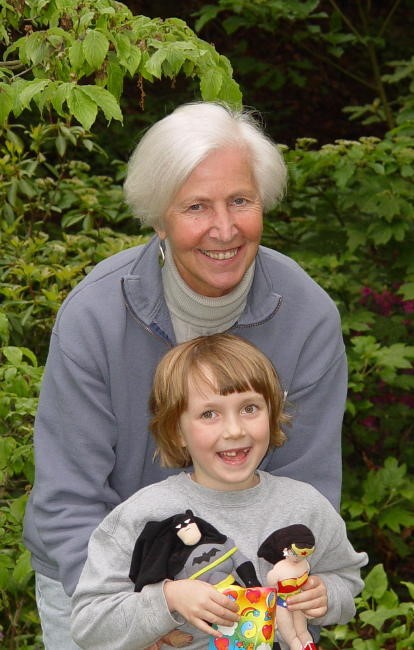
Personal Note: I want to offer one very personal note from my week. My mother and I were very close, she was an amazing, strong and inspirational woman who meant the world to me. I lost her suddenly and early to pancreatic cancer about 15 years ago. I and my daughter, who was 8 at the time and also very close to my mother, were devastated by losing her. I cherish every memory, photo and personal item I have from her. I have only a few pieces of her jewelry but I am always conscious to wear them when I have special events and work I am undertaking to protect the Earth so I can benefit from my mother’s love and strength. During the day I spent with Daniel and Mario touring the natural lands and communities being sacrificed to the fracking industry I realized I had lost one of my mother’s earrings I had carefully chosen to wear that day for strength and inspiration. It was a heart wrenching realization the moment I discovered that one of the earrings had been irretrievably lost at one of the frack sites we visited. But then I felt a tug of love at my heart and I began to reflect. 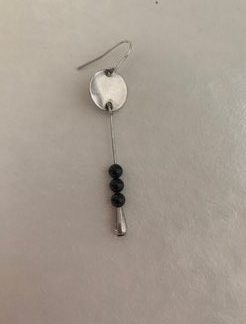 I thought about the strange set of circumstances that morning that had prevented me from wearing the earrings I had originally thought to wear and led me to choose my mother’s earrings. Long story short, I started to feel, understand and believe that the loss of the earring was my mother sending me a message. I have come to believe that the loss of the earring was my mother’s way of telling me that she too wanted to be a part of, and support, my efforts to advance this Green Amendment movement; that she joined me in my belief that a Green Amendment for New Mexico was vital for the earth, for New Mexico, and for future generations, particularly given the dramatic advance of the fossil fuel industry here; and that she wanted a piece of herself to stay on the wounded New Mexico landscape so she could, in her own small way, become a part of the New Mexico landscape and Green Amendment movement.
I thought about the strange set of circumstances that morning that had prevented me from wearing the earrings I had originally thought to wear and led me to choose my mother’s earrings. Long story short, I started to feel, understand and believe that the loss of the earring was my mother sending me a message. I have come to believe that the loss of the earring was my mother’s way of telling me that she too wanted to be a part of, and support, my efforts to advance this Green Amendment movement; that she joined me in my belief that a Green Amendment for New Mexico was vital for the earth, for New Mexico, and for future generations, particularly given the dramatic advance of the fossil fuel industry here; and that she wanted a piece of herself to stay on the wounded New Mexico landscape so she could, in her own small way, become a part of the New Mexico landscape and Green Amendment movement.
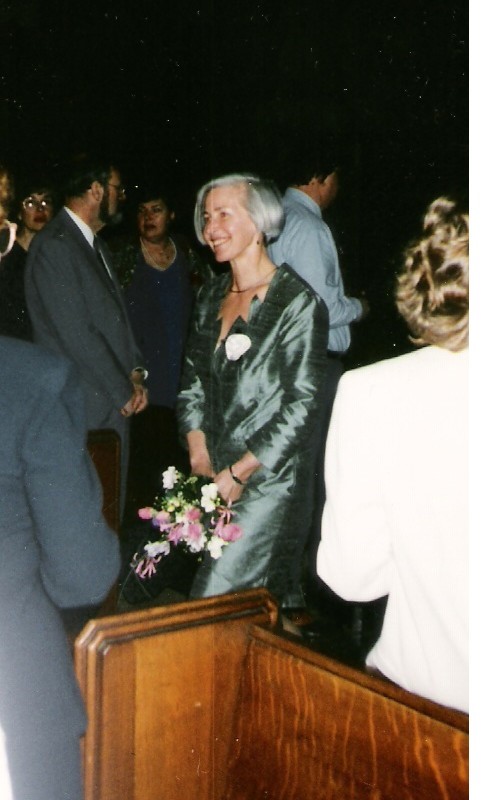 Rather than feeling sadness for the loss of one of the few remaining physical connections I have with my mother, I am feeling love and support for my work, for the earth, for my children and for any children they may choose to have. I have the second earring, the one that was literally out of my ear and would have been lost the next moment I stepped out of the car had I not reached to feel for it in a conscious effort to connect with my mother. I plan to turn that earring into a necklace so I can continue to feel the love and support of my mother it represents. Some of you may find this story silly and dismiss it out of hand. And that is okay. But all I can say is that I have felt deep devastation for the loss of each and every last physical remnant of my mother and her presence here on this earth – but the loss of this earring did not, and does not, hold that same emotional tear, rather it makes me remember and feel, in a very real way, her love, support and confidence in my work to save the earth.
Rather than feeling sadness for the loss of one of the few remaining physical connections I have with my mother, I am feeling love and support for my work, for the earth, for my children and for any children they may choose to have. I have the second earring, the one that was literally out of my ear and would have been lost the next moment I stepped out of the car had I not reached to feel for it in a conscious effort to connect with my mother. I plan to turn that earring into a necklace so I can continue to feel the love and support of my mother it represents. Some of you may find this story silly and dismiss it out of hand. And that is okay. But all I can say is that I have felt deep devastation for the loss of each and every last physical remnant of my mother and her presence here on this earth – but the loss of this earring did not, and does not, hold that same emotional tear, rather it makes me remember and feel, in a very real way, her love, support and confidence in my work to save the earth.

